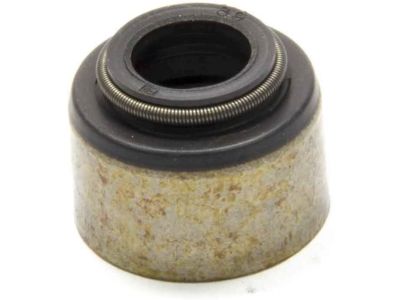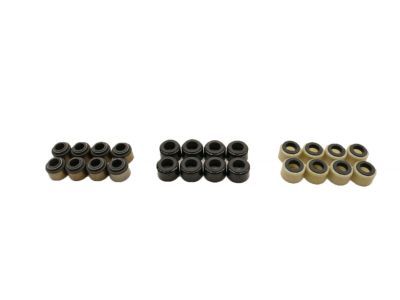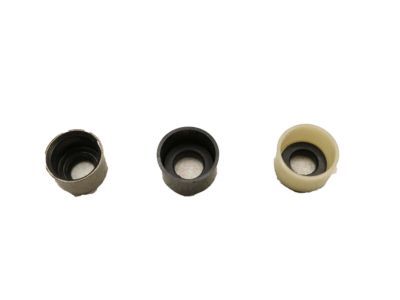
My Garage
My Account
Cart
Genuine Chevrolet S10 Valve Stem Oil Seal
Engine Valve Seal- Select Vehicle by Model
- Select Vehicle by VIN
Select Vehicle by Model
orMake
Model
Year
Select Vehicle by VIN
For the most accurate results, select vehicle by your VIN (Vehicle Identification Number).
10 Valve Stem Oil Seals found
Chevrolet S10 Seal, Exhaust Valve Stem Oil
Part Number: 12564852$12.60 MSRP: $15.33You Save: $2.73 (18%)Chevrolet S10 Seal,Valve Stem Oil
Part Number: 10212810$4.99 MSRP: $7.97You Save: $2.98 (38%)Ships in 1-3 Business DaysChevrolet S10 Seal,Valve Stem Oil
Part Number: 10214034$1.71 MSRP: $2.72You Save: $1.01 (38%)Ships in 1-3 Business DaysChevrolet S10 Seal Assembly, Intake Valve Stem Oil
Part Number: 10042875$13.05Ships in 1-2 Business DaysChevrolet S10 Seal Assembly, Inlet Valve Stem Oil .030" Oversize (Free Of Asbestos)
Part Number: 14037716Chevrolet S10 Seal Assembly, Intake Valve Stem Oil .015" Oversize (Free Of Asbestos)
Part Number: 14037715
Chevrolet S10 Valve Stem Oil Seal
Each OEM Chevrolet S10 Valve Stem Oil Seal we offer is competitively priced and comes with the assurance of the manufacturer's warranty for the part. Furthermore, we guarantee the speedy delivery of your orders right to your doorstep. Our hassle-free return policy is also in place for your peace of mind.
Chevrolet S10 Valve Stem Oil Seal Parts Questions & Experts Answers
- Q: How can you replace broken Rocker Shaft Spring Kit and Valve Stem Oil Seal without removing the cylinder head on 2.2L four cylinder engine on Chevrolet S10?A:Special tools and a source of compressed air are necessary to enable you change broken valve springs or faulty Valve Stem Oil Seals without taking off the cylinder head. Start by removing the spark plug from that particular cylinder (or all plugs if changing all seals). One cylinder at a time, start with number one cylinder at TDC, following the firing order. Put an adaptor into the spark plug hole, then link it up with an airline hose for supplying compressed air. Unbolt the Rocker Arm nut, remove the pivot ball and rocker arm from the leaking valve and take out the push rod. Supply compressed air to the cylinder in order to retain valves. Bring down valve spring compressors so that they can squeeze springs and hence release them from keepers. Get rid of spring retainer and valve spring, then replace guide seal making sure it is pushed downwards onto top of guide tube. Apply engine oil on valve stems and insert spring back followed by retainer forcing springs to their right places using locking tabs. Disconnect air hose, unthread adapter then reassemble rocker arm along with Pushrod, spark plug and finally valve cover. Turn on engine and look for oil spills as well as strange noises near that head cover area. Failure of pressure to hold down valve when closed may suggest either damage in valve itself or its seat or both thus meaning extensive repair by removing head.
Related Chevrolet S10 Parts
Browse by Year
2004 Valve Stem Oil Seal 2003 Valve Stem Oil Seal 2002 Valve Stem Oil Seal 2001 Valve Stem Oil Seal 2000 Valve Stem Oil Seal 1999 Valve Stem Oil Seal 1998 Valve Stem Oil Seal 1997 Valve Stem Oil Seal 1996 Valve Stem Oil Seal 1995 Valve Stem Oil Seal 1994 Valve Stem Oil Seal 1993 Valve Stem Oil Seal 1992 Valve Stem Oil Seal 1991 Valve Stem Oil Seal 1990 Valve Stem Oil Seal 1989 Valve Stem Oil Seal 1988 Valve Stem Oil Seal 1987 Valve Stem Oil Seal 1986 Valve Stem Oil Seal 1985 Valve Stem Oil Seal 1984 Valve Stem Oil Seal 1983 Valve Stem Oil Seal 1982 Valve Stem Oil Seal
























